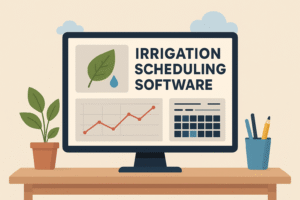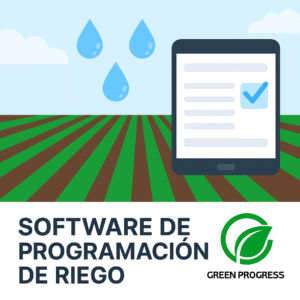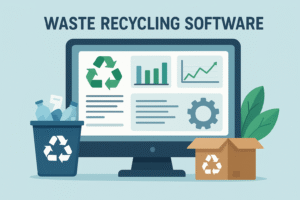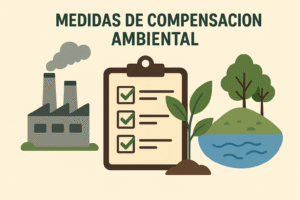An environmental report is more than a compliance document it’s a strategic tool for communicating a company’s environmental performance, sustainability goals, and regulatory accountability. Whether you manage a small business, a construction project, or a global brand, knowing how to create an environmental report can strengthen your reputation and drive long term sustainability.
What Is an Environmental Report?
An environmental report is a technical document that evaluates how an activity, project, or organization impacts the natural environment. It measures factors such as energy consumption, waste generation, air emissions, and resource use, then outlines actions to prevent or reduce environmental damage.
These reports are essential for demonstrating compliance with environmental legislation, supporting ESG disclosures, and achieving certifications such as ISO 14001.
They’re also powerful tools for building trust among investors, regulators, and the public.
Types of Environmental Reports and Their Key Features
Different types of environmental reports serve different purposes:
- Environmental Impact Report (EIR): Evaluates potential environmental effects before a project begins.
- Environmental Compliance Report (ECR): Confirms adherence to approved environmental commitments and permits.
- Environmental Monitoring Report: Tracks the effectiveness of mitigation and sustainability measures.
- Sustainability or ESG Report: Summarizes environmental, social, and governance performance.
Each type focuses on a specific phase of the project life cycle from design and approval to operation and closure.
When Are Environmental Reports Required?
Environmental reports are required whenever an activity may affect the environment or needs regulatory approval. Common situations include:
- Construction and infrastructure projects.
- Industrial expansion or modernization.
- Energy, mining, or extractive operations.
- Urban development or tourism near protected areas.
- Corporate ESG or sustainability initiatives.
Authorities, financial institutions, and international investors often require an environmental report as proof of responsible environmental management.
Purpose and Benefits of Environmental Reports
The main objectives of an environmental report are to:
- Identify and evaluate environmental risks and opportunities.
- Comply with national and international environmental laws.
- Reduce environmental impact through data driven action plans.
- Enhance transparency and stakeholder communication.
- Improve brand reputation and attract responsible investors.
In essence, an environmental report is both a regulatory necessity and a strategic sustainability communication tool.
Environmental Report vs. Environmental Audit: Key Differences
| Aspect | Environmental Report | Environmental Audit |
|---|---|---|
| Goal | Assess and document environmental impacts. | Verify compliance and performance. |
| Timing | Before or during project implementation. | During or after operations. |
| Responsibility | Prepared by project managers, consultants, or authorities. | Conducted by internal or external auditors. |
| Outcome | Descriptive report with recommendations. | Evaluation report with corrective actions. |
In short, an environmental report analyzes, while an environmental audit verifies.
Legal and Regulatory Framework for Environmental Reporting
Environmental reporting requirements vary by country but share global standards such as:
- Environmental Impact Assessment (EIA) regulations.
- ISO 14001 Environmental Management certification.
- EU Green Deal and UN Sustainable Development Goals (SDGs).
- Corporate ESG disclosure frameworks (GRI, SASB, TCFD).
Compliance ensures regulatory approval, investor confidence, and reduced legal risk.
Structure and Main Sections of an Environmental Report
A professional environmental report structure follows international best practices (ISO 14001, UNEP, and GRI guidelines). The goal is to present information logically, transparently, and with measurable indicators that prove environmental performance.
Here’s a complete structure you can adapt to your own project or organization:
1. Executive Summary
Summarizes key points of the entire environmental report project background, main environmental findings, potential impacts, and proposed mitigation measures. It should be concise yet compelling, allowing decision makers to grasp the essentials quickly.
2. Introduction and Legal Context
Defines the purpose of the report, the scope of assessment, and applicable environmental regulations. Mention national laws, international treaties (e.g., the Paris Agreement), and any corporate environmental policy or sustainability goals.
This section shows your commitment to compliance and transparency.
3. Project Description and Environmental Baseline
Explains what the project entails: location, size, operations, and timeline.
Include a baseline environmental assessment describing current air, water, soil, and biodiversity conditions before the project begins. Baseline data helps compare future environmental performance and validate improvements.
4. Impact Identification and Evaluation
This is the core of any environmental report.
Identify all potential environmental impacts both positive and negative on ecosystems, resources, and nearby communities.
Use structured methodologies such as:
- Leopold Matrix (to evaluate interaction between activities and environmental components)
- Risk matrices (to assess likelihood and severity of impacts)
- GIS mapping for spatial visualization of affected zones
Results should include quantitative indicators (e.g., tons of CO₂ emitted, cubic meters of water consumed) and qualitative assessments (e.g., habitat disturbance, noise perception).
5. Mitigation, Compensation, and Monitoring Plan
Propose specific, measurable, achievable, realistic, and time bound (SMART) measures to prevent, reduce, or compensate for identified impacts.
Examples include installing air filters, implementing waste segregation programs, and rehabilitating affected areas.
Also include a monitoring plan that defines frequency, indicators, and responsibilities for environmental performance tracking.
6. Resource Management and Sustainability Strategies
Outline actions to optimize resource use energy efficiency, water reuse, circular economy initiatives, renewable energy adoption, and carbon offset projects.
This section can be linked to broader corporate sustainability strategies or ESG disclosures.
7. Stakeholder Engagement and Communication
Describe how the company communicates with stakeholders, communities, and authorities.
Transparent dialogue increases credibility and ensures social acceptance of the project.
8. Conclusions and Recommendations
Summarize findings, risk levels, and overall environmental feasibility.
Offer actionable recommendations for continuous improvement and reference how results will be communicated in future environmental compliance reports or sustainability updates.
How to Create an Environmental Report Step by Step
Creating a professional environmental report requires strategic planning, accurate data, and technical clarity. Below is a detailed, step bystep process used by leading organizations and consultants.
Step 1: Define Objectives and Scope
Determine why the report is needed legal compliance, investor transparency, ESG benchmarking, or internal management.
Define scope: project boundaries, time frame, indicators, and data sources.
This clarity ensures that the environmental report aligns with both regulatory requirements and corporate sustainability goals.
Step 2: Gather Environmental Data
Collect quantitative and qualitative data through:
- Field measurements (air, water, soil sampling)
- Energy audits and waste inventories
- Environmental monitoring systems and IoT sensors
- Employee or community feedback
Maintain a data log with verifiable sources and ensure compliance with local data reporting standards.
Accurate data boosts report credibility and minimizes the risk of non compliance.
Step 3: Analyze and Interpret Results
Process data to identify trends, compare results with benchmarks or standards, and evaluate progress over time.
Use KPIs (Key Performance Indicators) such as:
- Greenhouse gas emissions (kg CO₂e/year)
- Energy efficiency (kWh/unit of product)
- Water consumption per process
- Waste recycling rate (%)
Visualize findings through charts, graphs, and GIS maps for better comprehension.
Highlight areas needing improvement and quantify potential cost savings or efficiency gains.
Step 4: Draft the Environmental Report
Organize content following the structure above.
Use clear and objective language suitable for non expert readers while maintaining technical accuracy.
Integrate:
- Tables and data visualizations
- Internal links to related sustainability policies
- Citations to recognized standards (ISO, UNEP, GRI)
This step transforms raw data into a compelling, evidence based story of your organization’s environmental performance.
Step 5: Review, Validate, and Approve
Have the draft reviewed by environmental specialists, legal advisors, and top management.
Cross check calculations, verify compliance with environmental legislation, and ensure all permits or impact assessments are correctly referenced.
Third party validation can enhance credibility and transparency, especially for ESG investors.
Step 6: Publish and Communicate
Once approved, publish the report on your website or sustainability platform.
Promote it across internal and external channels:
- Corporate newsletters
- ESG databases
- Investor relations portals
- Public meetings or CSR events
Encourage stakeholder feedback it supports future improvements and demonstrates your commitment to continuous environmental responsibility.
Best Practices to Improve Your Environmental Report
- Use verified data and standardized metrics.
- Include charts, infographics, and maps for clarity.
- Align with international sustainability frameworks.
- Highlight measurable improvements year over year.
- Link to related sustainability pages to boost domain authority.
❓ Frequently Asked Questions (FAQs)
Who prepares an environmental report?
Environmental engineers, sustainability experts, or certified consultants.
Is it mandatory for all companies?
Not always, but recommended for ESG transparency and investor relations.
How long does it take to prepare one?
From a few weeks to several months, depending on project complexity.
What happens if it’s not submitted?
Possible legal sanctions, project suspension, or loss of investor confidence.







